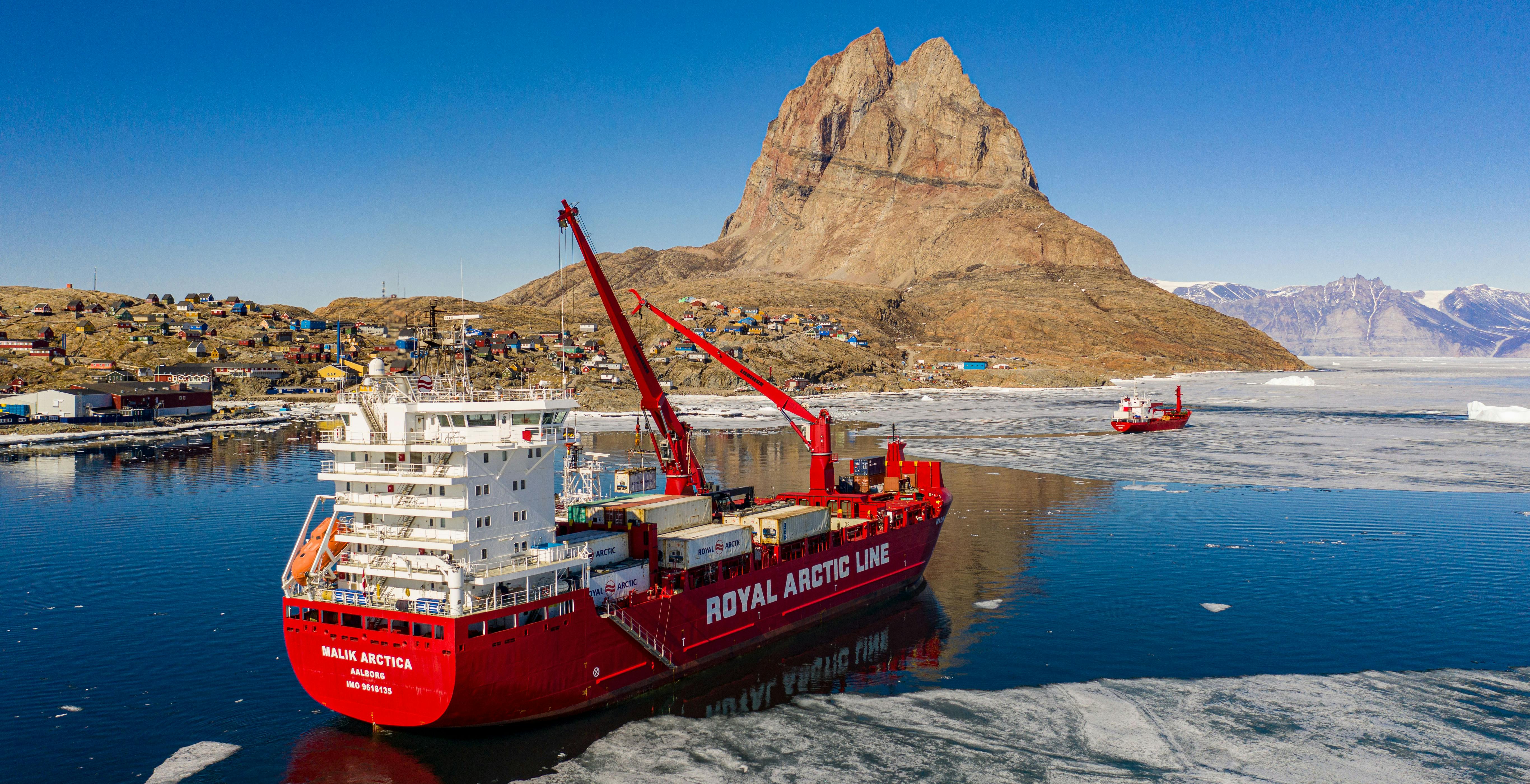Royal Arctic Line collaborates on sustainable development
The company’s 2020 CSR report contains an account of the company’s work with sustainable development and its focus on reducing its C02 footprint.
Download the report here
Since 2015, Royal Arctic Line has undergone a process of change that has been aimed at modernising the company, making it future-proof and making it possible to enter into cross-sector collaboration through standardisation and renewal of the fleet.
IT systems have been replaced, collaborations have been established and a new route structure now provides customers with access to doing business through multiple ports with multiple international connections. The business strategy is now in a stabilization phase which will ensure that processes and networks can operate together optimally and that the strength of change can create added value for the company and its customers.
Better utilization of assets
As a consequence of the collaboration with the Icelandic shipping company Eimskip, goods between Greenland and Scandinavia are now carried by three big ships instead of several smaller ships. As a consequence, there has been a reduction of CO2 emissions per container moved. It is the economy of scale, the cornerstone of the collaboration, that gives us this advantage.
Seasonal fluctuations in the volume of goods transported also have an effect on utilization of assets and as a consequence, the amount of CO2 emissions per container moved. The new network provides opportunities to address these seasonal fluctuations. The typical peak season is from June to November and the off-peak season stretches from December to May. In the former Greenland-Denmark network, it was not possible to utilize this surplus capacity, but with calls at more ports in the network, this is now a possibility.
In 2020, Royal Arctic Line entered into collaboration with DHL Global Forwarding. The purpose was to increase areas of business and to expand utilization of the surplus capacity in the network, e.g. on the southbound stretches which is caused by the difference between import volumes and export volumes. It is expected that the joint effort will already result in significant improvements in utilization rates in 2021, thereby increasing the opportunity for increased earnings.
Research-based development
In the wake of maximising the use of the existing capacity, the cargo must be transported with the least possible fuel consumption. Royal Arctic Line has therefore entered into partnerships with Frugal Technologies and engine supplier MAN, where, on a test basis, newly-developed technology has been installed on board Malik Arctica. The technology is a newly-patented and class approved on-top system for intelligent engine control which is able to minimize the ship’s fuel consumption.
The average savings in fuel consumption are 10-15%, which for Malik Arctica is the equivalent of 3-4 tons of fuel per day on the long stretches between Denmark and Greenland.
Frugal Propulsion is an intelligent learning-control system which uses sensors, Big Data and advanced algorithms to ensure the engine is constantly optimised for draught, load, waves and wind. Since the system works regardless of fuel type, Royal Arctic Line sees the potential is using this technology on the other ships in the fleet. This is technology that could help to push developments in the right direction here and now, thereby helping the shipping industry to attain its goal of a 70% reduction of CO2 emissions per ton carried before 2050.
